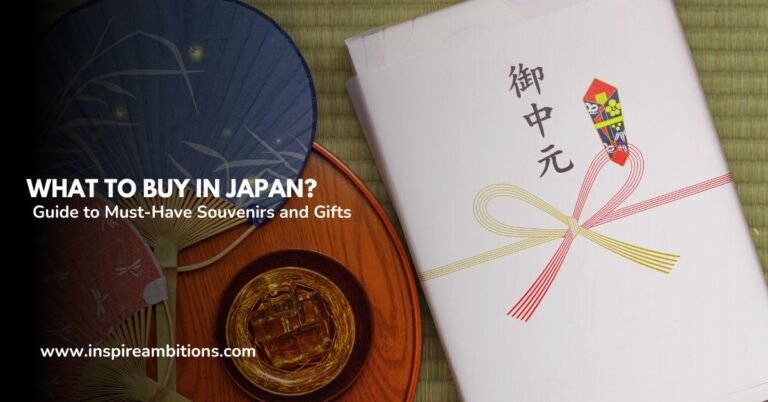Teriyaki Japan – Exploring the Authentic Flavors of a Classic Cuisine
Teriyaki cooking, a cornerstone of Japanese cuisine, captures the essence of simplicity and taste in its dishes. This technique involves grilling or broiling foods after basting them in a succulent, glossy soy sauce, mirin, and sugar sauce.
The result is an irresistible combination of sweet, savoury, and slight smokiness that tantalizes the taste buds and has become popular worldwide.
Откройте для себя delights of teriyaki with easy homemade recipes perfect for quick dinners or special occasions. Whether you opt for chicken, beef, or tofu, the key to ideal teriyaki lies in the sauce’s ability to cling to the food, creating a juicy and flavour-packed meal.
Embrace this culinary tradition, which, though deeply rooted in Japan, has crossed borders and infused its flavours into various dishes across different cuisines.
Origins and History of Teriyaki
Teriyaki is a shining example of authentic Japanese cooking that dates back to the Edo period. This cooking method involves grilling or broiling with a glaze that gives the food a distinctive shine and flavour.
What is Teriyaki? Teriyaki refers to a Японская кухня technique where foods are glazed with soy sauce, mirin (a rice wine), and sugar before being broiled or grilled. ‘teriyaki’ combines Japanese terms: “teri” meaning luster or shine, and “yaki”,,, ,,, meaning grilled или broiled.
Traditional Use in Japan
In its land of origin, teriyaki was used as a glaze for fish, particularly favourites like skipjack tuna (katsuo), salmon, marlin, and mackerel. The preparation allowed the proteins to be preserved and flavoured for eating.
Adaptations Outside Japan
While teriyaki remained relatively unchanged in Japan, immigrant ingenuity shaped it into something uniquely its own when it travelled to the United States. The glaze began to be used more broadly, often accompanying ingredients like chicken and beef, diverging from the more authentic Japanese seafood cooking.
Key Points on Teriyaki
- Historical Roots: Teriyaki’s history is deeply rooted in the culinary traditions of the Edo period.
- Japanese Technique: It is a classic cooking method with a glossy finish and enhanced taste.
- International Evolution: As teriyaki spread globally, the recipe adapted, integrating a wider variety of meats.
Your appreciation for teriyaki might deepen with an understanding its origins and evolution. It’s a taste of Japanese tradition, surviving centuries and crossing oceans to be where it is today.
Teriyaki Ingredients and Variations
Teriyaki, a culinary technique and flavour deeply rooted in Japanese cuisine, involves a combination of savoury and sweet components that can be adjusted to suit a variety of proteins and dishes.
Sauce Components
The base of the teriyaki sauce usually consists of:
- Соевый соус: The quintessential ingredient that adds the umami and salty flavour profiles.
- Mirin: A sweet rice wine that imparts a mild sweetness and a subtle sheen to the glaze.
- Сахар: Often used to enhance the sweetness, which balances the saltiness of the soy sauce.
- Sake: A Japanese rice wine that contributes to the sauce’s complexity.
Alternative sweeteners, такой как honey или brown sugar, can be used to adjust the flavour. Чеснок, ginger, и grated onion are often included for additional depth and aroma.
Выбор белка
When it comes to teriyaki, you can choose from a wide array of proteins:
- Курица: A popular choice, often used in teriyaki dishes to create a succulent and flavorful meal.
- Говядина: Known for its rich, hearty flavour and is perfectly complemented by the teriyaki sauce.
- Рыба: Options like salmon и eel work beautifully with the teriyaki glaze, offering a delicate texture.
- Pork: Provides a robust backdrop for the sweet and savoury teriyaki flavours.
- Tofu: A plant-based alternative, tofu can absorb the teriyaki sauce well, making it a hit among vegetarians and vegans.
Vegetables and Extras
To round out a teriyaki dish:
- Лук: Adds sweetness and texture.
- Имбирь: Brings a fresh, zesty kick to the dish.
- Чеснок: For a punchy, aromatic hit.
- Freshly ground black pepper: To give a slight heat and enhance the overall flavour profile.
Additional ingredients, like sesame seeds, can be sprinkled on top for extra crunch and nuttiness. Pineapple chunks or sliced bell peppers can be included for a refreshing twist when aiming for a distinct flavour or texture.
Cooking Techniques and Utensils
When engaging with teriyaki, a traditional Japanese cooking method, understanding the necessary techniques and utensils can significantly enhance your dish’s outcome.
Grilling and Frying
Teriyaki began to grill proteins such as chicken, beef, or fish after marinating them. To achieve the characteristic teriyaki flavour, a grill or frying pan with a lid is essential to retain moisture and cook evenly. Here’s a quick guide:
- Grill: Preheat your grill to medium-high heat, ensuring it’s hot before placing your marinated items on the grates.
- Frying Pan: If grilling isn’t an option, heat your frying pan with a bit of neutral oil over medium-high heat for that perfect sauté.
Remember to use paper towels to pat the protein dry before cooking. This ensures a good sear and helps prevent sticking.
Glazing and Marinating
The teriyaki glaze is integral to this Japanese cooking method. To prepare the marinade or glaze, combine ingredients like soy sauce, mirin, and sugar, giving the dish its signature glossy sheen and rich flavour.
- Marinating: Coat your protein in the teriyaki marinade and let it sit, ideally for at least 30 minutes.
- Glazing: While cooking, baste your protein with the sauce to add layers of flavour.
Strive to sprinkle some diamond crystal kosher salt on the protein after marinating. When glazing, ensure the sauce caramelizes but does not burn, applying it several times to build up a lustrous coating.
Using these techniques and supporting them with the proper utensils, you can create authentic teriyaki dishes with balanced sweet and savoury flavours unique to traditional Japanese cuisine.
Serving and Presentation
When it comes to serving teriyaki dishes, both the accompaniments and plating styles significantly enhance the dining experience. The right combination can turn a simple dish into a memorable meal.
Accompaniments
Teriyaki dishes work harmoniously with various sides и accompaniments that balance flavours and textures. Here are the standard pairing options:
- Рис: A staple in Japanese cuisine, steamed white rice often accompanies teriyaki dishes, acting as a perfect base to soak up the delicious teriyaki sauce.
- Salad: A crisp, fresh salad provides a contrasting texture to teriyaki’s rich, savoury notes.
When considering alternatives, here are more options:
- Bento: Teriyaki chicken or yellowtail teriyaki are frequent stars in a bento box, complemented by pickles and sides.
- Broccoli: Often steamed or sautéed, it’s a favourite for adding a healthy, crunchy aspect to the meal.
Plating Styles
A visual feast on a plate makes tasting teriyaki even more pleasurable.
- Traditional: Teriyaki is typically plated simply with rice and perhaps some pickled vegetables, allowing the glistening sauce and the protein to shine.
- Modern: In a contemporary presentation, creativity reigns. One might find суши или сашими accompanied by a slight, artful drizzle of teriyaki glaze.
Here’s what a contemporary teriyaki plate might include:
- Yakitori-style: Skewers of teriyaki-glazed meats or fish are a visually appealing and easy-to-eat option.
- Бургеры: Some fusion restaurants serve teriyaki burgers with a side of salad or fries for a cross-cultural dish.
Regarding utensils, chopsticks are traditionally used for eating teriyaki dishes, but Western cutlery may be provided depending on the dining context.






